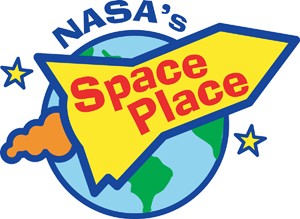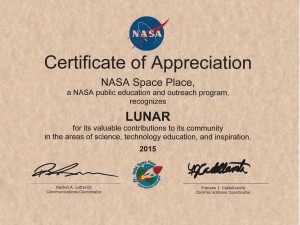There is this great idea that if you look hard enough and long enough at any region of space, your line of sight will eventually run into a luminous object: a star, a galaxy or a cluster of galaxies. In reality, the universe is finite in age, so this isn’t quite the case. There are objects that emit light from the past 13.7 billion years—99 percent of the age of the universe—but none before that. Even in theory, there are no stars or galaxies to see beyond that time, as light is limited by the amount of time it has to travel.
Is there a super-Earth in the Solar System out beyond Neptune?
When the advent of large telescopes brought us the discoveries of Uranus and then Neptune, they also brought the great hope of a Solar System even richer in terms of large, massive worlds. While the asteroid belt and the Kuiper belt were each found to possess a large number of substantial icy-and-rocky worlds, none of them approached even Earth in size or mass, much less the true giant worlds. Meanwhile, all-sky infrared surveys, sensitive to red dwarfs, brown dwarfs and Jupiter-mass gas giants, were unable to detect anything new that was closer than Proxima Centauri. At the same time, Kepler taught us that super-Earths, planets between Earth and Neptune in size, were the galaxy’s most common, despite our Solar System having none.
Venus and Jupiter prepare for their close-up this August
As Earth speeds along in its annual journey around the Sun, it consistently overtakes the slower-orbiting outer planets, while the inner worlds catch up to and pass Earth periodically. Sometime after an outer world—particularly a slow-moving gas giant—gets passed by Earth, it appears to migrate closer and closer to the Sun, eventually appearing to slip behind it from our perspective. If you’ve been watching Jupiter this year, it’s been doing exactly that, moving consistently from east to west and closer to the Sun ever since May 9th.
Sixth Grade Rockets
By Justin Belknap
NAR# 97349 JR
In the following article, I will tell you about my experience with rocketry in my sixth grade class. How I watched the other kids learn about rockets and learned some things as well. How I built and painted a rocket with someone that was not related to me. Last but definitely not least, the look on the other kids faces when the rockets launched on launch day.
Hubble’s bubble lights up the interstellar rubble
When isolated stars like our Sun reach the end of their lives, they’re expected to blow off their outer layers in a roughly spherical configuration: a planetary nebula. But the most spectacular bubbles don’t come from gas-and-plasma getting expelled into otherwise empty space, but from young, hot stars whose radiation pushes against the gaseous nebulae in which they were born. While most of our Sun’s energy is found in the visible part of the spectrum, more massive stars burn at hotter temperatures, producing more ionizing, ultraviolet light, and also at higher luminosities. A star some 40-45 times the mass of the Sun, for example, might emit energy at a rate hundreds of thousands of times as great as our own star.
NOAA’s Joint Polar Satellite System (JPSS) to revolutionize Earth-watching
If you want to collect data with a variety of instruments over an entire planet as quickly as possible, there are two trade-offs you have to consider: how far away you are from the world in question, and what orientation and direction you choose to orbit it. For a single satellite, the best of all worlds comes from a low-Earth polar orbit, which does all of the following:
Hubble Shatters The Cosmic Record For Most Distant Galaxy
The farther away you look in the distant universe, the harder it is to see what’s out there. This isn’t simply because more distant objects appear fainter, although that’s true. It isn’t because the universe is expanding, and so the light has farther to go before it reaches you, although that’s true, too. The reality is that if you built the largest optical telescope you could imagine — even one that was the size of an entire planet — you still wouldn’t see the new cosmic record-holder that Hubble just discovered: galaxy GN-z11, whose light traveled for 13.4 billion years, or 97% the age of the universe, before finally reaching our eyes.
Gravitational Wave Astronomy Will Be The Next Great Scientific Frontier
Imagine a world very different from our own: permanently shrouded in clouds, where the sky was never seen. Never had anyone see the Sun, the Moon, the stars or planets, until one night, a single bright object shone through. Imagine that you saw not only a bright point of light against a dark backdrop of sky, but that you could see a banded structure, a ringed system around it and perhaps even a bright satellite: a moon. That’s the magnitude of what LIGO (the Laser Interferometer Gravitational-wave Observatory) saw, when it directly detected gravitational waves for the first time.
NASA Certificate of Appreciation
The Closest New Stars To Earth
When you think about the new stars forming in the Milky Way, you probably think of the giant star-forming regions like the Orion Nebula, containing thousands of new stars with light so bright it’s visible to the naked eye. At over 400 parsecs (1,300 light years) distant, it’s one of the most spectacular sights in the night sky, and the vast majority of the light from galaxies originates from nebulae like this one. But its great luminosity and relative proximity makes it easy to overlook the fact that there are a slew of much closer star-forming regions than the Orion Nebula; they’re just much, much fainter.



